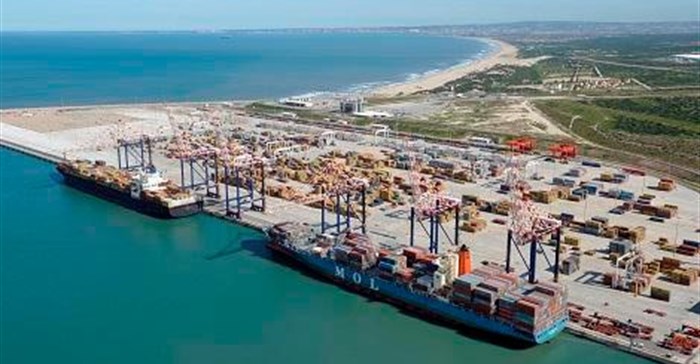Stage Two: Request for proposal (RFP)
Then the pre-qualified bidders will submit binding proposals to develop, construct, finance and operate the proposed project at a specified port pursuant to a RFP.
The DoE is very keen to discuss and engage with the pre-qualified bidders about the RFP and the commercial arrangements around the IPP. Once the finer points have been ironed out, the DoE will issue a second and final version of the RFP, which will be used as the blueprint for the bid process.Terms and conditions
The pre-qualified bidder will have to come up with a technical solution and demonstrate an implementation capability to meet the performance criteria of the project.
The successful bidder will be required to manage the risks within each element of the gas supply and power generation chain and the interfaces between them.
The “integrated” approach assumes that the gas to power chain will be supported through a power purchase agreement with Eskom and by an implementation agreement between the DoE and the IPP.
The term of the power purchase agreement will be 20 years from the scheduled commercial operation date.
Designated ports
The first phase will focus on Richards Bay in the KwaZulu-Natal and Ngqura (Coega) in the Eastern Cape Province as they both have existing transmission grid infrastructure to support energy generation.
Saldanha Bay has been excluded from the first phase as substantial work is required to the port, grid infrastructure, servitudes for the pipeline, transmission lines and the location for the power plant.
A site for the construction of the LNG-receiving facilities (within each of the port limits) and power plant facilities (near the port) will be made available through the Transnet National Ports Authority.
A potential site for the power generation facility, location of the FSRU (or equivalent technology) and associated servitudes for gas to power lines have been identified at each port.
Bidders are, however, at liberty to propose their own power generation facility sites. The PIM provides background information in respect of the sites to interested parties.
The bidders’ obligations
The successful bidders will take all site risk, including obtaining necessary permits and consents.
They will be required to propose a technical solution of a gas-fired power plant using combinations of combined cycle gas turbines and open cycle gas turbines or engine technologies to provide flexible dispatch regime (fuelled by regasified LNG) for a range between 1-3GW.
Fuel costs will be passed through to the consumer via the power purchase agreement with Eskom, and the DoE will, in consultation with the NERSA, provide a mechanism for gas regulation, which, among other things, reduces foreign currency exposure while ensuring bankability of the projects.
The power purchase agreement’s tariffs will be rand, (ZAR)-based.
The successful bidders responsibilities are expected to include the following:
- LNG procurement and delivery;
- providing LNG storage and regasification facilities (using Floating Storage and Regasification Unit (FSRU) technology or equivalent facilities such as Floating Storage Units plus shore-based or barge-based regasification facilities);
- the supporting port infrastructure including fixed maritime structures and dredging of the berthing pocket for the FSRU (or equivalent LNG regasification and storage technology);
- the necessary gas transmission pipelines to connect with the new power generation facility;
- provision of a gas distribution hub for third parties to distribute gas by pipeline;
- provision of a gas distribution hub for handling LNG that may then be distributed by a third party (by road or rail);
- alternative fuel storage facilities, including the option for alternative back up fuel supplies, to mitigate the impact of unplanned interruptions to the LNG supply chain;
- the new power generation facilities;
- the necessary power transmission line to the point of electricity delivery; and
- the arrangements for the potential sale of a modest percentage of gas from the volumes that it contracts pursuant to its LNG sale and purchase agreement to potential third party gas users.
The PIM also anticipates that the use of large scale FSRUs (or equivalent LNG regasification and storage technologies) will result in such facilities exceeding the capacity that is necessary to meet the requirements of proposed gas-fired power generation plant. So they will have to include mandatory third-party access to the extra capacity of the gas infrastructure through a terminal use agreement, gas transportation agreement and multi-user terminal agreement.
The successful bidders will be required to comply with mandatory socio-economic objectives which will be detailed in the RFQ for each port.
Key equity participants in a bidder are expected to include:
- Power plant developer (with capability in the development and operation of a gas-fired power facility);
- Terminal operator (with capacity in the development and operation of an FSRU (or equivalent technology).
The terms and conditions of any state-owned company (SOC) participation in a project will be clarified in the RFQ and RFP. A SOC will not participate at the bid stage. For the purpose of the RFQ responses, bidders will be required to indicate their willingness to set aside a prescribed percentage for one or more SOCs (in addition to equity set aside for the broad based share ownership scheme). Pre-qualified bidders will be required to comply with such equity commitments.
Pre-qualified bidders will be required to have a South African entity participation of at least 35%, inclusive of the set aside equity for SOCs but exclusive of the broad based share ownership scheme.
The minimum shareholder participation requirements for the broad based share ownership scheme will be detailed at the RFP stage.

















































